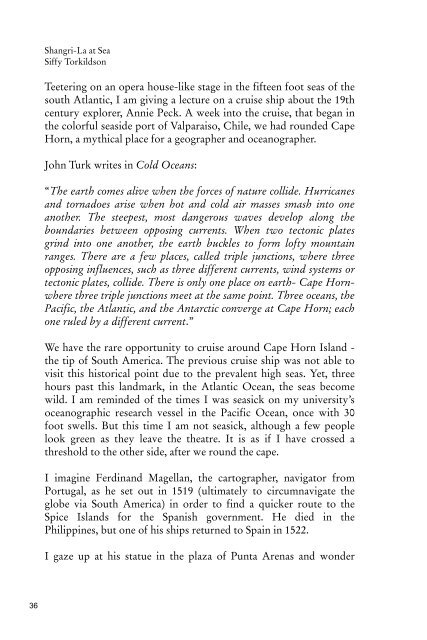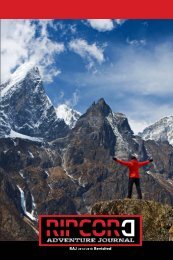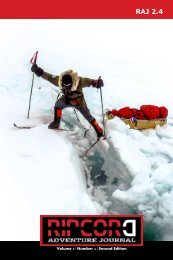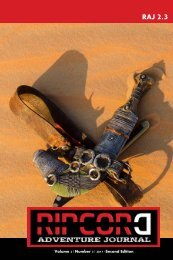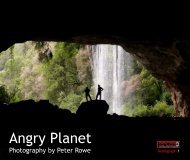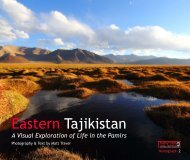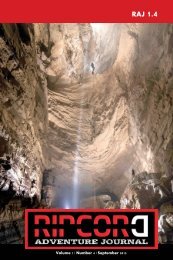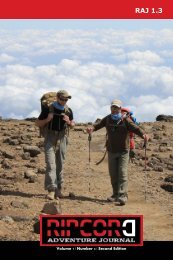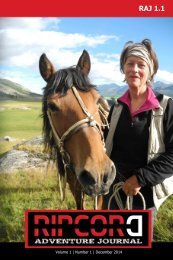Ripcord Adventure Journal 2.1
Where do we begin? A fast track literally, to Germany where a sports car and our journalist are tested to the limits and left begging for more. Following the exploits of a legendary aviator from continent to continent, our Journal proceeds to venture across Mali, cycling the route to a fabled city of gold and encountering a festival of mud which annually repairs what must be one of the "newest" old buildings in the world. Our next journey explores the concept of adventure on board a luxury cruise ship as it rounds the infamous Horn, can Shangri-la really exist at sea? This leads us thoughtfully to the colourful Monlam Cham festival of Tibet as it is explored by two friends in search of Marco Polo and inner calm, we then journey forward to an encounter with a personal hero, visit eleven architectural gems on the road less travelled and complete our whirlwind travels in the land of the Midnight Sun.
Where do we begin? A fast track literally, to Germany where a sports car and our journalist are tested to the limits and left begging for more. Following the exploits of a legendary aviator from continent to continent, our Journal proceeds to venture across Mali, cycling the route to a fabled city of gold and encountering a festival of mud which annually repairs what must be one of the "newest" old buildings in the world.
Our next journey explores the concept of adventure on board a luxury cruise ship as it rounds the infamous Horn, can Shangri-la really exist at sea? This leads us thoughtfully to the colourful Monlam Cham festival of Tibet as it is explored by two friends in search of Marco Polo and inner calm, we then journey forward to an encounter with a personal hero, visit eleven architectural gems on the road less travelled and complete our whirlwind travels in the land of the Midnight Sun.
You also want an ePaper? Increase the reach of your titles
YUMPU automatically turns print PDFs into web optimized ePapers that Google loves.
Shangri-La at Sea<br />
Siffy Torkildson<br />
Teetering on an opera house-like stage in the fifteen foot seas of the<br />
south Atlantic, I am giving a lecture on a cruise ship about the 19th<br />
century explorer, Annie Peck. A week into the cruise, that began in<br />
the colorful seaside port of Valparaiso, Chile, we had rounded Cape<br />
Horn, a mythical place for a geographer and oceanographer.<br />
John Turk writes in Cold Oceans:<br />
“The earth comes alive when the forces of nature collide. Hurricanes<br />
and tornadoes arise when hot and cold air masses smash into one<br />
another. The steepest, most dangerous waves develop along the<br />
boundaries between opposing currents. When two tectonic plates<br />
grind into one another, the earth buckles to form lofty mountain<br />
ranges. There are a few places, called triple junctions, where three<br />
opposing influences, such as three different currents, wind systems or<br />
tectonic plates, collide. There is only one place on earth- Cape Hornwhere<br />
three triple junctions meet at the same point. Three oceans, the<br />
Pacific, the Atlantic, and the Antarctic converge at Cape Horn; each<br />
one ruled by a different current.”<br />
AAAAAAAAAAAAAAAAAAAAAAAAAAAAAAAAAA<br />
AAAAAAAAAAAAAAAAAAAAAAAA<br />
We have the rare opportunity to cruise around Cape Horn Island -<br />
the tip of South America. The previous cruise ship was not able to<br />
visit this historical point due to the prevalent high seas. Yet, three<br />
hours past this landmark, in the Atlantic Ocean, the seas become<br />
wild. I am reminded of the times I was seasick on my university’s<br />
oceanographic research vessel in the Pacific Ocean, once with 30<br />
foot swells. But this time I am not seasick, although a few people<br />
look green as they leave the theatre. It is as if I have crossed a<br />
threshold to the other side, after we round the cape.<br />
I imagine Ferdinand Magellan, the cartographer, navigator from<br />
Portugal, as he set out in 1519 (ultimately to circumnavigate the<br />
globe via South America) in order to find a quicker route to the<br />
Spice Islands for the Spanish government. He died in the<br />
Philippines, but one of his ships returned to Spain in 1522.<br />
I gaze up at his statue in the plaza of Punta Arenas and wonder<br />
36


